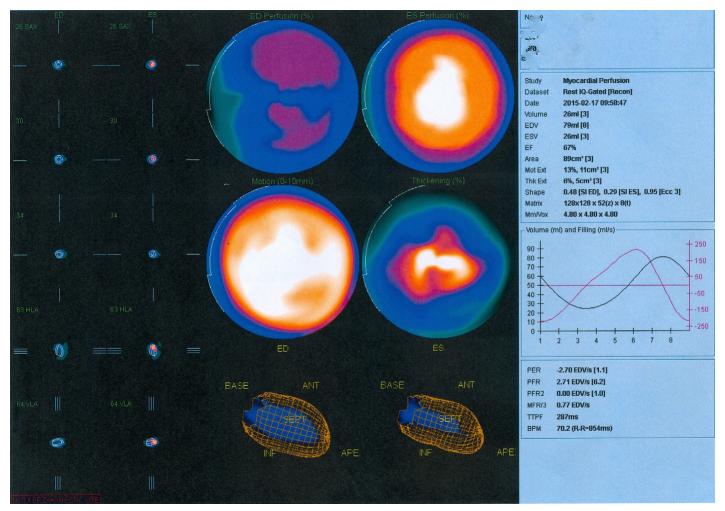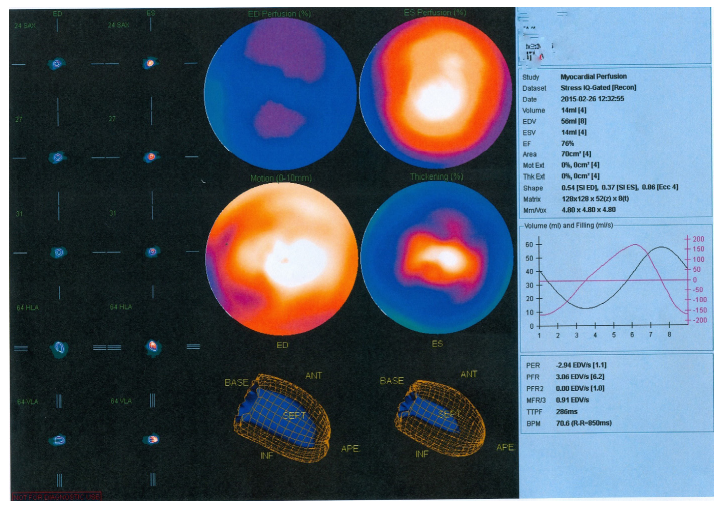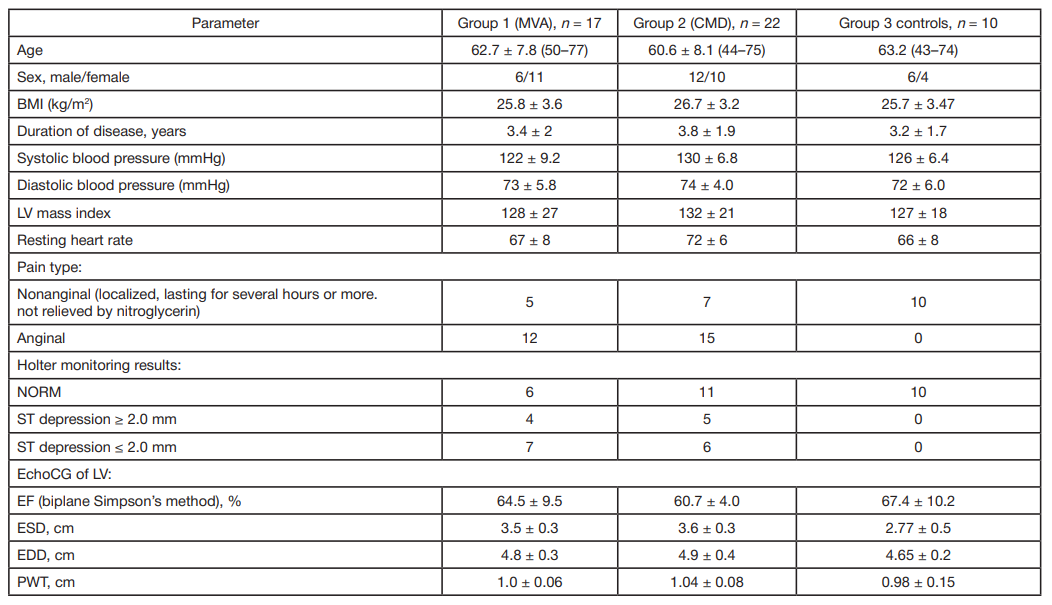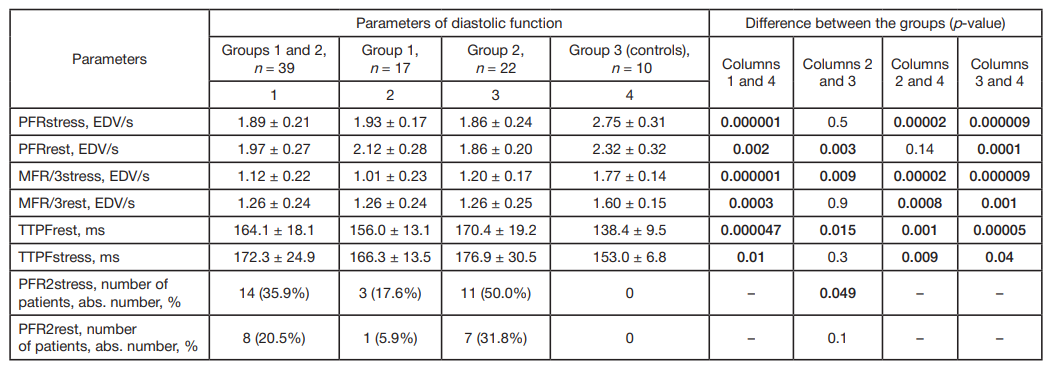
This article is an open access article distributed under the terms and conditions of the Creative Commons Attribution license (CC BY).
ORIGINAL RESEARCH
Assessment of diastolic function in patients with chest pain and angiographically normal coronary arteries using ECG-gated spect
1 Pirogov Russian National Research Medical University, Moscow, Russia
2 Russian Medical Academy of Postgraduate Education, Moscow, Russia
Correspondence should be addressed: Elvira A. Khachirova
Ostrovityanova 1, Moscow, 117997; ur.liam@90kihcle
Acknowledgements: the authors wish to thank Viktor K. Sychev for kindly allowing them to use the equipment of the Laboratory for Radioisotopes.
Author contribution: Khachirova EA recruited patients for the study, prepared the necessary documentation, participated in conducting the cardiac stress test and SPECT/CT, and processed the obtained data; Samoylenko LE controlled the course of the study and double-checked the obtained results; Shevchenko OP made sure inclusion and exclusion criteria were met.




